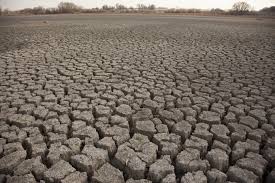
It is time to recognize the serious California drought for what it is: a bellwether of things to come; a harbinger of even more serious challenges to California water resources allocation, management, and use.
The drought could end next month. It could go on for more years. But it will not be the last drought and it is vital that we take the opportunity -- amidst the serious problems farmers, cities, and the environment all face -- to rethink those aspects of California water policy created in the 1900s and 2000s that no longer make sense in the 21st century.
We must also consider this drought in the context of climate change. We know the climate is changing because of human emissions of greenhouse gases and we know our water resources are especially vulnerable. These climatic changes are superimposed on top of our natural variability of floods and droughts and we must factor this into our responses.
There will be more to come at this blog site on the impacts of the drought and on the range of appropriate and necessary responses. But for now, let's acknowledge the Bellwether Drought as a message to us to use this opportunity to seek a better water future.

1) No more using potable water on lawns in California; shower-to-lawn graywater or other reclaimed water only (and no delivery by truck, which just adds atmospheric carbon load). Compromise position: legislation that nullifies homeowner association requirements to have lawns, and let people pay for the water. This is good for 20% savings in residential water use.
2) Require all agriculture to convert to high-efficiency irrigation, and provide low-interest loans for farmers to do so.
3) Change the building code to allow on-site residential graywater recycling, laundry-to-toilet. This is also good for 20% savings in residential water use.
4) Shower-to-lawn graywater is presently "legal" but only in a highly compromised manner that is basically a shallow leach field and insufficient to keep a lawn green. Ideal case is to discourage lawns entirely, but shower-to-lawn graywater is a decent compromise.
5) Use whatever publicity measures are available to discourage people moving to California from other states. Population growth is the root cause of all other ecological impacts.
6) Residential water consumption taxes, for quantities above some level that is empirically viable for the number of persons receiving service at a given address, based on the number of bedrooms. The tax should escalate exponentially as consumption increases beyond the designated level.